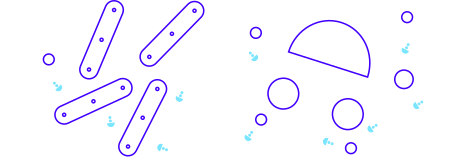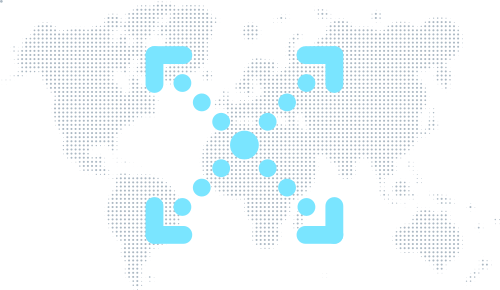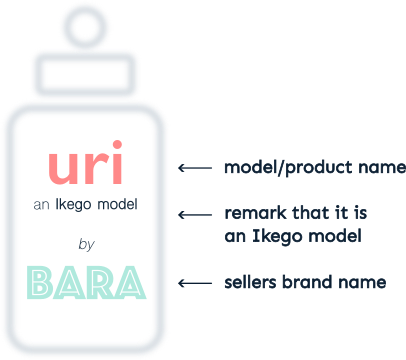Cobuilding Circularity!
Join us on our journey to a circular world:
↓
Buy a set
Buy sets from our catalog or hire designers from the Ikego network to create custom solutions for you and progress the system.
Explore sets ⤤
Design a set
Use and evolve Ikego’s open circular design system to invent and share sustainable products; professionally in your job, or just for fun.
Learn more ⤤
Sell Ikego sets
Do you want to produce and sell individual parts or entire products made from Ikego parts?
Start selling ⤤
Teach or learn
Ikego is perfect to learn or teach about design, circular sustainability and creativity, while creating real research for a better world. We offer workshops for all ages and skill levels. Book one from us or offer workshops yourself.
Start here ⤤
Make sustainable impact
Ikego explores a decentralized, collaborative and therefore strong approach to sustainable circular design. Let’s change the world together!
Learn more ⤤
✼

i. Design with us
Hello Designer,
design circular and collaboratively using open source multipurpose parts,
like this:
1. Design modular
Create products from simple individual parts.

2. Make it fit for reassembly
Allow things to come apart and rejoin. Don’t glue or snap things in place.

3. Go multipurpose
Use parts that can be creatively repurposed in many ways. Pick them from our catalog or create your own.

4. Share to collaborate
Transparency enables collaboration. And circular design is built on collaboration. Share your solutions so they really work.


Apply this methodology in your professional environment. Make a difference. We also invite you to: Add your design to the Ikego catalog to connect it to other designs. It’s simple. Here is how.

How to add my set to Ikego?
It just requires 3 simple steps
1. Build a functional prototype
- Ikego requires a functional prototype of your design. In some cases, a rendering can work as long as it is clear that your design/concept works as intended and can be built. You don’t need to have an aesthetic or manufacturing prototype done.
2. Use multipurpose parts
- Try to use as many multipurpose parts as possible. A great way to show that your parts are multipurpose is to use parts from our catalog. You can also add new parts. Show how they are multipurpose. For some parts this is obvious (e.g. fasteners), for others it may require some explanation or evidence (e.g. sketches with ideas for alternative uses). Check our part design suggestions for inspiration. Reach out with questions any time.
3. Publish it on the web
- Share your design on the web. You pick the place – it might be your website but also forum for example works. We will copy some key information to the Ikego page and send visitors and manufacturers for details to your publication. For this to work we need you to include some key information in your post we can copy. It is different for a model and a part.
–
Infos to include for your model
Include this in your post:
- a name for the model,
- at least one image of 940x940px or larger,
- list of all parts used. If you used parts from our catalog list them with their numbers and link to the parts. If you add new parts, you need to document them, so we can add them to our page. Find the list of info to include below.
- Do you have exclusive IP rights for your model or plan to get some? Let people know. Options: (A) “IP protected: Yes” (share the IP rights you have) (B) “IP protected: Pending” (if you are still not sure if you want to file for protection) (C) “IP protected: No and not planned” (if you don’t have any plans to make your design exclusive by filing for IP protection). If you don’t know what this means read read about IP here or contact us.
- Do you allow professional local makes? If yes, would you like to receive a donation for a make? If so, please indicate the amount you would like to receive per make and a channel to send the money through to you (e.g. paypal.me, gofundme, patreon or something similar). Don’t forget to include your contact email in case manufacturers want to get in touch.
- A disclaimer (optional): You could include a disclaimer. It is a means to protect you in the very, very unlikely event that someone builds your model, does damage with it, and tries to blame you. This is not something specific to Ikego, it could happen to you when ever you post publicly. Copy & paste this: “Disclaimer: This model is just a concept and not fully tested. You should not assume that it works as indicated and I am not saying that it does. I disclaim any responsibility or liability for any damage caused during the construction and use of products based in whole or in part on the concept shown here. All information is provided for your use at your own risk.”
✼
–
Infos to share for new parts
Design your post as you like.
9 lines of info to share, explanations and template to copy below.
↓
Basic Info
- Image: At least one image 940x940px or bigger.
- What is it: … for example “a board”
- Material: … for example “flexible | standard tolerance“
- Dimensions: … for example “380x230x15mm | standard tolerance”
- Holes: … for example “Ikego Grid, 4 holes ⌀ 10mm”
Get the part
- Buy: Two options. Option 1: “available as local make plus readily available in (name store/s),”Option 2: “available as local make plus readily available in stores, search for (add search term)”
- Make: … for example “find wood, cut it, drill it”
Meta
- Introduced by: … for example “Art Vandelay”
- Open: Two options. Option 1: “I, as the designer of this part publish it under the Ikego Public Promise Version 1.0” shorter “Shared under IPP 1.0.“ Option 2: “I bought this part off the shelf. It might be prior art but I don’t guarantee this.”
- Disclaimer: “This part is just a concept and not fully tested. You should not assume that it works as indicated and I am not saying that it does. I disclaim any responsibility or liability for any damage caused during the construction and use of products based in whole or in part on the concept shown here. All information is provided for your use at your own risk.”
–
Explanations
Image: You should own the rights to the image or give us an image under an open license we we can use. Don’t worry about removing the background. We’ll do that.
What is it: Give it some kind of name “board” or “beam” or “knot”
Material: Ikego works with → tolerance to enable local manufacture from local materials. So you don’t write “wood” but “Strong material” which is wood but also metal or plastic for example. The part can be made from all materials unless you add specific requirements here for example “magnetic” or “foamy but durable!”
Dimensions: Ikego works with → tolerance to enable local manufacture with local tools that might not be high precision. So under the standard tolerance the dimensions of a part can vary up to 15 mm on all sides. If your part deviates from this, e.g. because the height must always be exactly the same so that it fits together with other parts, write that here. Otherwise, just leave the link to ‘standard tolerance’ as it is. Complex parts should include drawings to make their dimensions understandable.
Holes: Does the part have holes? If so, how many and what diameter? And do the holes follow the → Ikego grid? Complex parts may require a drawing to show the location of the holes. If your part doesn’t have any holes, just leave it out.
Buy: Can your part be bought anywhere? Have you bought it? Feel free to list specific shops or search terms. Anything that will help people order the part. If it can’t be bought, leave the “local make” comment and link here.
Make: Feel free to add information that will help people make this part. If you don’t have any, just leave this part out.
Your name is important. Especially for parts you made yourself. If your name is obvious – for example because it is your personal website – feel free to leave this part out.
Open: If you made the part yourself, no matter how simple it is, you must choose option one here – the publication under the Ikego Public Promise License Vs 1.0. If you bought the part off the shelf, choose option 2. Make sure you understand what this means, it is about your → intellectual property to the part.
The disclaimer is optional.
–
Copy, Paste & Edit
Copy & paste this to your website and edit
↓
Basic Info
- What is it:
- Material: | standard tolerance
- Dimensions: | standard tolerance
- Holes: Ikego Grid
Get the part
- Buy: Option 1: “available as local make” Option 2: “available as local make plus readily available in (NAME STORE/S),” Option 3: “available as local make plus readily available in stores, search for (ADD SEARCH TERM/S)”
- Make: no instructions available
Meta
- Introduced by:
- Open: Option 1: “I, as the designer of this part publish it under the Ikego Public Promise Version 1.0” shorter “Shared under IPP 1.0.“ Option 2: “I bought this part off the shelf. It might be prior art but I don’t guarantee this.”
- Disclaimer: This part is just a concept and not fully tested. You should not assume that it works as indicated and I am not saying that it does. I disclaim any responsibility or liability for any damage caused during the construction and use of products based in whole or in part on the concept shown here. All information is provided for your use at your own risk.
Can I make money with it?
Yes. Of course.
Designing with multipurpose parts is among other things a method for professional work. The more time you can spend on it the more impact you’ll have. Offer it to your clients. There are good reasons why they would want you to create such a design for them.
You and your client can also add your design to the Ikego site and have it featured in the public catalog. This opens up additional benefits and potential earning opportunities:
- Ikego tries to make you known. On our site, the names of the designers take centre stage. We want to draw attention to you. Attention could translate into earning opportunities:
- Find a manufacturer, vendor or gig. Ikego’s aim is to attract manufacturers and vendors who want to offer products made from multipurpose parts to their customers. When they browse the site, they may find your design and contact you for a collaboration. But it is not just mass production partners that you might find. Maybe there’s a local museum that wants to create a circular exhibition using multipurpose parts. They find you as the local expert on the Ikego page and reach out…
- Donations for local makes. You can allow your designs to be made and sold as local makes and ask for a donation for each make. In a way, your product is in production the moment it goes live on the Ikego site. Ikego will work hard in the coming years to make this local makes feature something that is widely used and accepted.
- A fun bet on the future. Imagine for a moment that Ikego works very well and becomes a large, unique platform for a new way of designing, buying and using products. History has shown that creators who join new platforms early (like Instagram, YouTube and others) have an unfair advantage over late comers. It’s now almost impossible to get big on Instagram. The early movers grew with the platform and stayed on top. Ikego hopes to grow to a stage where it can reward big creators for their contributions (for example, if a part they contributed or a use case they discovered is used a lot and creates a lot of value). It’s easier to take big steps in the beginning.
- Pretty risk free because it stays your design. On top Ikego is pretty risk-free for you. We don’t take your IP. You retain full control of your design, just as you would outside Ikego. We just show the parts you have used and how they can be reused. Ikego adds something and doesn’t take anything away. So you don’t risk much by contributing, because the model you create remains yours. Even if Ikego stops working, you still have a functioning modular product to work with. The connection to Ikego is a potential surplus. But your product will work without it.
- Your branding. As you can see in the picture below. Ikego does not become the brand of your product. It is just a quality of it: there is a page where you can look up remix opportunities for it. It carries the name you have chosen for it and your name or the brand of the company that sells it. You can solve it as shown in the picture below or find another way.
What about my intellectual property?
We believe that designing with multipurpose parts works best, when the parts are open, as in open source. So we ask you to make your parts open source. But your model design does not have to be open. It can be closed and exclusive to you, as is common in the design world.
If you want to learn more about IP and Ikego please read here.
How to start?
With a friendly message 
Email us at today@ikego.world. Tell us what you want to design. Or what parts do you think would be great to use? You can also just say hello or ask a question.
✼
Design challenges? If you want some inspiration, here are some things to think about:
- Redesign icons. The history of design has created some really beautiful looking products that have proven to sell well. Unfortunately most of them don’t consist of multipurpose parts. Redesign them – like Audrey did with the Marii. Don’t worry about IP. Your redesign will look slightly different from the original. That difference will probably be enough to take you out of the scope of protection of the original design. And if it is more than 25 years old, IP protection has probably expired anyway.
- Popular products. What are the most popular products people buy online? Do some research. Pick something from this list that is not already in the catalog and start designing a version made from multipurpose parts.
- Start playing: Below you’ll find a download section for 2D and 3D parts. Just move them around on your screen and see what ideas come up!
Downloads
- For many parts you can find design files to work with in our → DOWNLOAD PORTAL. Use them to start your Ikego design journey.
Pro Newsletter
Ikego professionals newsletter signup

ii. Manufacturer & Vendor Brief
Hello manufacturers & vendors,
we invite you and help you to sell your customers sustainable products with superior & fun remix features.

Why? What benefits do I get?
3 general reasons to commission and sell a design made from multipurpose parts:
- Target group. Multipurpose part design is mainly aimed at young, creative, active people who are building their first home and have children or are about to have children. People who are constantly in need for new products. You tap into the target group that made IKEA a billion dollar company. But you have the better offer for them. Because your furniture is interactive. IKEA suddenly looks old compared to you.
- Sustainable. The political and societal pressure on companies to move towards sustainability is growing in many areas of the world. Actors such as the EU are constantly introducing new laws that force companies to adopt sustainable and circular practices. Ikego enables you to be ahead in the game. Leapfrog several steps. Join an ecosystem of sustainable companies early on and outgrow the old world.
- Less overproduction and more business opportunities: Imagine you’ve made chairs that aren’t selling well. With Ikego you don’t have to throw them away or sell them at a loss. Because they are made from multipurpose parts that can be used for other things. Take them apart and use the parts to assemble other products that people want. Or sell the parts individually or as ‘parts packs’ to creative customers. There are more ways to profit from the fact that your production line spits out multipurpose parts than just selling one product.
3 reasons to pick a design from the Ikego model catalog or connect your commissioned model to the Ikego model catalog:
- Product-Service-System to connect to for free. Ikego is basically a product-service-system. Every Ikego product consists of parts that have a digital twin. The parts have different use cases that create more possibilities and more value for your customers. You customers get products that are alive and grow over time – thanks to Ikego’s open innovation process, the list of use cases is constantly growing. You sell them a product that gets better and more useful over time! A much better deal for them, more reasons to buy from you.
- Marketing synergies. Ikego invests heavily in marketing. This brings attention to the Ikego system and the products available in it. You will benefit from it. Plus everyone in the network is also marketing the Ikego system alongside their products. This creates synergies. A chair manufacturer benefits from the marketing of a bag manufacturer and vice versa. Together you explain why your products are superior. Someone who has bought an Ikego bed will search for a matching “Ikego chair” and there you are. It may not be long before the ecosystem has a joint marketing budget that far exceeds that of a large multinational corporation.

- A soft LockIn. When companies trap you in their ecosystem, it is called the lock-in effect. If you have an iPhone, you can’t use the Google Play Store, and your iPhone doesn’t work very well with your Windows computer. You are supposed to buy matching Apple products. Once you are stepped into the Ikego system as a customer, you have incentives to get more involved. The more Ikego products, and therefore multipurpose parts, you have in your home, the more opportunities there are for you. It is a “soft” lock-in because customers can buy Ikego parts and products from other sellers too. But at the moment this group is quite small and the lock-in effect should really benefit you for a long time.
Where is the risk?
- Low to no risk. If you engage with Ikego you get the chance to gain a lot without adding much additional risk. Imagine what could go wrong? Even if Ikego’s promises don’t work for you, you still have a regular product to sell, just like before. You have to make a good product either way. Ikego allows you to add a lot of sugar on top of a great product.
✼
To get the full picture we recommend to also read how intellectual property works in Ikego.
Can I manufacture and sell every model on this page?
Basically yes.
If you want to produce a model in larger quantities (100+ units), please contact the model designer in advance. You’ll find a link to the designer’s original post in the design info section of the model. You’ll find a contact address there.
If you are just a small workshop and want to make small quantities (up to 100 units) – perhaps as a local make – please visit the designer’s original post too. There you’ll find a note if the designer allows local makes and if the designer wants to receive a donation for it. If a donation is requested, include the donation amount in the price you charge your client and forward it to the designer after you receive payment for your work.
The donation system for local makes is is currently based on trust. But please honour it. We’ll all win. And send us pictures of your products. We could list you here as a workshop/shop to order from. Let’s send more customers to you.
If you exceed the hundred units mark, you are out of the “local make” range. Please contact the designer then to negotiate a better deal.
What is a ‘local make’?
Ikego parts are easy to make and well documented. The assembly of the models is in most cases easy as well. To a skilled builder they don’t present any problems. This allows customers to take a design to a local handyman and order it. The handyman gets paid and a small part of the revenue is forwarded to the model designer as a donation. This is called “distributed manufacturing”. Ikego encourages customers to engage local handyman to produce local makes in order to grow the ecosystem.
But designers can choose to disable local makes and give exclusive manufacturing and sales rights to specific vendors. If a model has active IP protection, it is possible to block at least certain executions of a model – for example, an orange chair with round edges – and prohibit others to use the brand name of the model. Monopolies on models are possible.
However it should be noted that the tolerance methodology may still allow for other commercial makes of the same model if they look different enough – for example, the same chair but in black with sharp edges. This is common practice in the existing design world, not something specific to Ikego. There are many similar looking shelves, chairs, backpacks and more. Learn more here.
So, as a potential local manufacturer of a model, you should always check if the designer allows local makes or if there are any restrictions in place.
Can I add a link to my online shop to the Ikego page?
It’s simple. Make a product, put it on digital or physical shelves, then tell us about it via email. We’ll put you on the page.
Listing is free*
You can also contact us at an early stage. We are happy to hear your questions and ideas.
* Eventually in the future we will introduce paid premium listings or fees for adding your links. This is one of Ikego’s planned business models to ensure the system runs reliably and sustainably and gets better and better: affiliate marketing for shops.
Questions?
Send an email.
Newsletter for professionals
Ikego professionals newsletter signup

Local Chapter
Ikego is open and built to be built together. Got an idea for a local group or business? Be it in making and selling products, in sustainability education, or an Ikego circular design experience center, or… What is your idea? Get in touch.